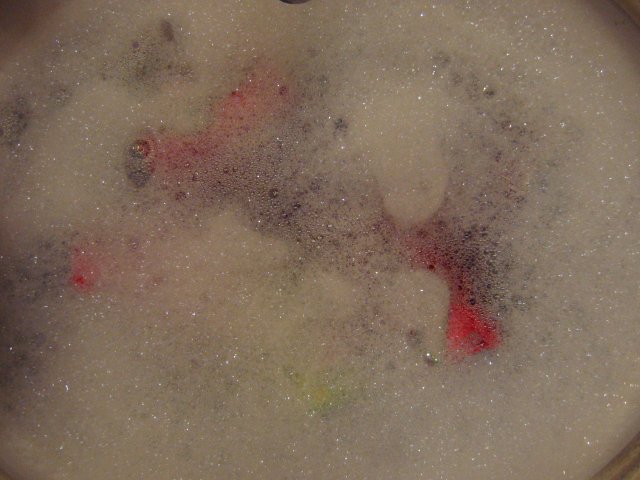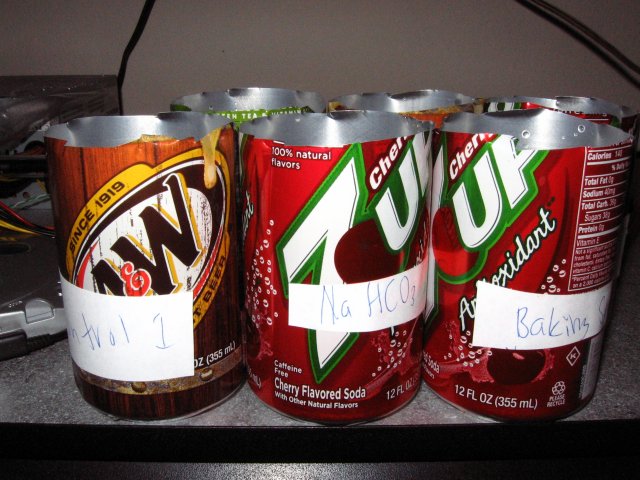Yeast performs anaerobic respiration which generates CO2 and lactic acid which can be counteracted (kinda):headshake2: by using baking soda.
C6H12O6 -> 2C3H6O3
C3H6O3 + NaCHO3 -> NaC3H5O3 + CH2O3
Sodium Lactate (NaC3H5O3) IS an antimicrobial solution, but generally less harmful than living in acid itself(assumed from experiments by someone else)! :devil:
Yeast can also perform fermentation which results in ethanol and CO2.
C6H12O6 -> 2 C2H5OH + 2 CO2
Yeast is also able to perform aerobic respiration which results in CO2 and H2O.
C6H12O6 -> 6CO2 + 6H2O
Ethanol and lactic acid and sodium lactate are both poisonous to yeast, so aerobic respiration is ideal for yeast.
Solution? Add hydrogen peroxide.
Mechanism? Yeast has enzymes that convert H2O2 (it's already unstable... LOL) into H2O and O2 in which O2 can be used for aerobic respiration. Why would yeast want to do that? Because H2O2 is POISON!
2H2O2 -> 2H2O + O2
Bibliography: Wikipedia.
This is only a theory. I have not tested it yet. (and might once I find some uncontaminated containers to test in.)
C6H12O6 -> 2C3H6O3
C3H6O3 + NaCHO3 -> NaC3H5O3 + CH2O3
Sodium Lactate (NaC3H5O3) IS an antimicrobial solution, but generally less harmful than living in acid itself(assumed from experiments by someone else)! :devil:
Yeast can also perform fermentation which results in ethanol and CO2.
C6H12O6 -> 2 C2H5OH + 2 CO2
Yeast is also able to perform aerobic respiration which results in CO2 and H2O.
C6H12O6 -> 6CO2 + 6H2O
Ethanol and lactic acid and sodium lactate are both poisonous to yeast, so aerobic respiration is ideal for yeast.
Solution? Add hydrogen peroxide.
Mechanism? Yeast has enzymes that convert H2O2 (it's already unstable... LOL) into H2O and O2 in which O2 can be used for aerobic respiration. Why would yeast want to do that? Because H2O2 is POISON!
2H2O2 -> 2H2O + O2
Bibliography: Wikipedia.
This is only a theory. I have not tested it yet. (and might once I find some uncontaminated containers to test in.)
Last edited:





